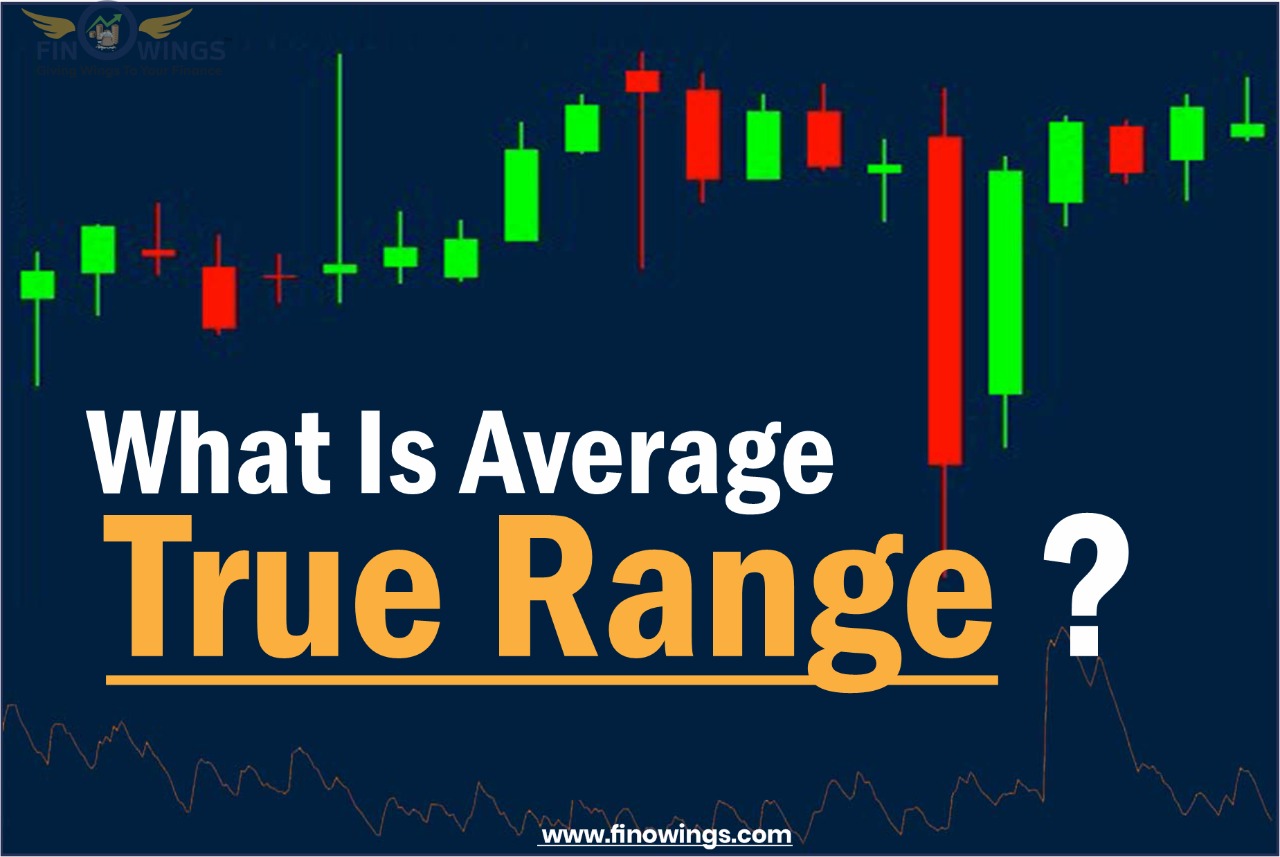Home >> Blog >> What is Average true range?
What is Average true range?

Table of Contents
Average true range
Average true range, or ATR, is a technical indicator that can tell how volatile the stock has been on average, over a specific period. It is the average of true ranges over a specified period and measures volatility by decomposing the full range of asset value for that period, taking into account any gaps in price movement.
ATR was introduced by market technician J. Welles Wilder Jr. in his 1978 classic technical textbook "New Concepts in Technical Trading Systems". Originally, Wilder developed the ATR for the commodity markets, although the indicator can also be used for stocks and indices. Other indicators he suggested were the Relative Strength Index (RSI), the Parabolic SAR, and the Directional Movement Index.
ATR is particularly useful for setting exit as part of your risk management strategy. It can also give you a sense of how strong price moves are, which is helpful if you are trying to identify the start of a trend. In short, ATR takes a holistic look at a stock’s price moves over a set period and smooths them out in a single number, expressed as a rupee amount. Traders typically use the 14-period to calculate the ATR as it was first recommended by J. Welles Wilder.
ATR is based on the concept of true range, which is a way of measuring a stock's daily trading range that accounts for gap openings i.e. when the stock opens sharply higher or lower relative to the previous day’s closing price. Unlike other technical indicators, ATR does not indicate a market's price trend, but only measures its degree of volatility.
The Average True Range (ATR) Formula:
To calculate ATR by hand, you must first calculate a series of true ranges (TR). The calculation of ATR is done by using the following 1 of 3 methods; TR is the largest of the following for a given trading period:
· Method 1: Current High minus the current low : (current high – current low)
· Method 2: Current High minus the previous Close: (current high – previous close)
· Method 3: Current Low minus the previous Close: (current low– previous close)
Values are recorded for each period, and then the average is taken. It does not matter whether the value of this calculation is positive or negative. The highest absolute value is used in the calculations. Typically, ATR calculations are based on 14 periods as suggested by Wilder, which can be intraday, daily, weekly or monthly. To measure recent volatility, use a smaller average, such as 2 to 10 periods and use 20-50 periods to measure long term volatility,. Wilder used the following formula for subsequent periods after the initial 14-period ATR was completed to smooth the data:
Current ATR = [Prior ATR x (n-1) + TR] / n
Where TR= True Range (current true range)
n = Number of Periods
ATR = Average true Range
If n = 14; formula represented as
Current ATR = [(Prior ATR x 13) + Current term range (TR)] / 14
Why is it important to account for gaps?
Imagine that two stocks close overnight at ₹50 per share, Stock A opens at a higher margin of ₹60, while Stock B opens at its close of ₹50. Stock A then trades within a range of ₹3 between its daily high and low, while Stock B trades within a wide range of ₹5. Traders who only look at the stock's daily trading range can say that Stock B is more volatile as it experienced wider price swings that day. But he fails to account for Stock A of ₹10 gap overnight. True Range allows such gaps to be uncovered by comparing the day's high and low with the previous day's levels, giving you a better understanding of how much the stock's price has moved over time. By averaging the daily true range value of a stock over a specified period, you get its ATR. On many trading platforms, the default period is 14 days. Some traders also use 20 or 22 days, as there are typically 20 to 22 trading days in a month.
How do traders use the Average True Range?
ATR was created to allow traders to more accurately measure the daily volatility of an asset using simple calculations. Volatility is a significant concept in the stock market. It simply refers to the degree of circulation of financial assets within a certain period of time. Average True Range (ATR) can tell you whether the market is volatile or not. Simply put, a stock with a high level of volatility has a high ATR, and parity, a stock with low volatility has a low ATR.
ATR not only provides information about the current market conditions. But it is also a tool for traders that can be used for making trading decisions. Especially when it comes to improving stop loss, take profit and trade exit, ATR can be very helpful. The indicator can help day traders confirm when they might want to initiate a trade, some traders use ATR to help them set stop loss levels. When the ATR is high, a trader expects wider price movements and thus, he will move his stop-loss orders further away to avoid premature halts. On the other hand, we will use a smaller stop loss when volatility is low. Finally, many traders use ATR to measure the enthusiasm behind a stock move.
Limitations of Average True Range:
The Average True Range Indicator has mainly two limitations.
The first is that the ATR is based on the absolute price change, not the percentage change. Accordingly, higher priced stocks generally have higher ATR values than lower priced stocks. After all, a move of ₹10 in ₹100 stock is no less important than a move of ₹10 in ₹20 stock.
Second, a change in ATR indicates changes in volatility. If a stock's ATR is rising. This means that volatility has increased over the period, either due to a sharp rise or a sharp decline - the ATR doesn't tell you in which direction the stock is moving, just that it is moving. If the ATR is shrinking, it means the stock has been less volatile over the period.
Third, the ATR is a subjective measure, which means it is open to interpretation. A single ATR value will not tell you with certainty whether a trend is about to reverse or not.
Conclusion:
ATR is a versatile tool that helps traders to measure volatility, although they are used less frequently than standard indicators by many traders, these tools can help a trader enter and exit trades and should be seen by all system traders as a way of helping them increase profitability. It is also a useful indicator for long-term investors to monitor stocks. ATR is not a directional but a unique volatility indicator that shows the degree of interest or disinterest in a move. It can be used to validate the enthusiasm behind a move or breakout. A bullish reversal with an increase in ATR would show strong buying pressure and strengthen the reversal. A bearish support break with an increase in ATR would show strong selling pressure and strengthen the support break. A day trader can use this indicator in conjunction with other indicators (such as Bollinger Bands, Historical Volatility, Donchian Channel and Relative Volatility Index) and strategies to plan trade entry and exit points. ATR’s strength lies in its simplicity, but if you decide to experiment with it in your trading activities, pay attention to its limitations.
Frequently Asked Questions
ATR is a useful indicator for long-term investors to monitor stocks. This allows traders to measure the daily volatility of an asset more accurately using simple calculations. ATR is also useful for traders looking for exits as part of their risk management strategy.
The Average True Range (ATR) is a volatility indicator that shows how much the price can move. A day trader can use it in conjunction with other indicators and strategies to plan trade entry and exit.
The Average daily range (ADR) shows the average change in prices over a specific period of time. Average True Range (ATR) is similar to ADR, but it takes into account any lag in pricing between the closing of one trading period and the opening of the next. ADR is calculated as the difference between daily highs and lows averaged over some period and ATR takes into account the relative high and low of the previous closing price.
















